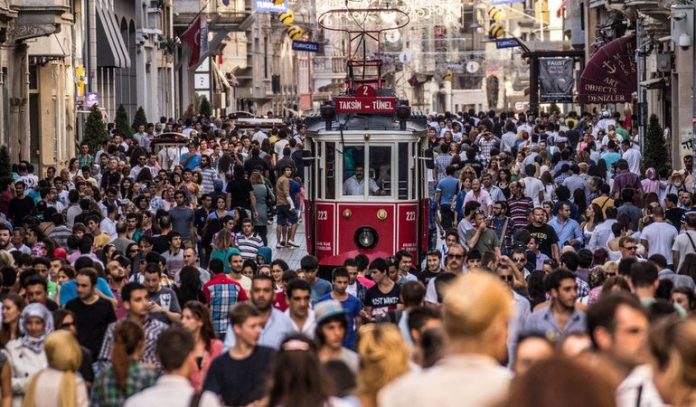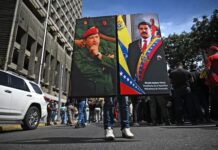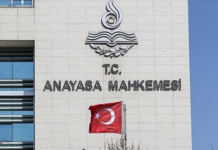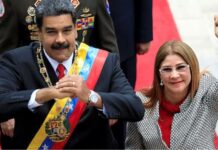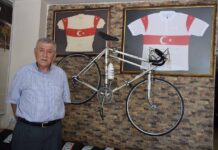Most of you are not aware, I know.
But with the state of international reporting on Turkey, I can’t blame you. It’s extremely difficult to slice through the hate-filled rhetoric and distorted depictions to discern what reality in Turkey is like. Journalists who know neither the language, the history, nor the society have immense difficulty writing lucid reports on Turkey; think-tankers grinding political axes for the Washington Beltway have no real interest in the opinions or experiences of everyday Turkish people; for security specialists analyzing battlefield movements and terrorist techniques from 10,000 miles away, Turkey is a theoretical construction of which they have little real, practical knowledge.
A year-and-a-half have passed since Fethullah Gülen’s minions tried but failed to assume control over Turkish state institutions –n thanks to the incredible will, determination, and self-sacrifice of the Turkish people. Understanding Turkish society right now means recognizing the trauma experienced by Turkish people during that event, as well as its continuing impact.
A year has also elapsed since the various violent militant organizations intent on attacking Turkish state and society last succeeded in perpetrating serious violence in Turkey’s major urban areas. Nearly a year has gone by since Operation Euphrates Shield concluded, and now Operation Olive Branch, made possible by American bungling (more on that later), is likely to remove the PKK from its last stronghold in northwest Syria, enabling Idlib province to be united with the territory (around Azez) previous stabilized by Euphrates Shield. Syrians in Idlib and Afrin will then be able to begin the process of rebuilding their lives and communities, and Turkish society will be more secure. So an appropriate point has arrived for discussing these and other developments in Turkish society.
The Big Zeytin in 2018
Istanbul, at the street level, has a more cosmopolitan appearance than at any time in the past twenty years. Large numbers of visible foreigners, whether Arab tourists and refugees, Turkic workers from Inner Asia, Filipino and other Southeast Asian nannies, Chinese importers and restaurateurs, Arab, African, Pakistani, and Turkic students, as well as the usual European tourists, now throng the streets even well outside traditional touristic or trendy neighborhoods.
The scenes on public transport in Istanbul are now what they were before 2013, but with a more subdued atmosphere. It’s clear that people are still trying to overcome the shock of all the violence inflicted on Turkish society in 2013-2016. The silence I sometimes encounter on the subway is not (as it used to be) the silence of provincials not accustomed to talking loudly in unfamiliar public settings. Instead, it’s the silence of citizens regrouping and finding their bearings after massive social suffering. At the same time, giggling and voluble chatter are once more becoming common. Even subway musicians have improved their skills.
The main threat to life-and-limb on Istanbul’s streets has switched from thuggish taxi drivers to lawless motorcycles and scooters. Istanbul’s rail-based public transport continues to expand, but the road traffic is a plague that shows little sign of abating. It has pushed more and more Istanbuliotes to turn to two-wheeled transport options as a means of skirting through, or around gridlock. Bicycles, for example, are now becoming a sidewalk hazard for the first time as more and more children gain access to them, and more people see them as a commuting option.
But it is motorcycles and mopeds that are a far greater danger because they are much more common, and also because their drivers observe no laws or regulations whatsoever. Motorcyclists going the wrong way on the sidewalk down a one-way street? A daily occurrence. Moped drivers using pedestrian crossings and walkways of all sorts, including bridges, as shortcuts? Entirely the norm. Right now, taking even a single step on Istanbul’s streets means looking both ways even on one-way streets, even on the sidewalk, to make sure that no crazy, gözü dönmüş Vespa driver (with the de rigueur Italian-flag helmet) is bearing down on you at high speed.
But most of all there are the crowds. The same intense, physical presence of hundreds of thousands of people has returned to Istanbul’s downtown boulevards and sidewalks. The city’s sheer population mass once again makes itself felt on the streets, and the palpable energy that drew me to Istanbul twenty years ago is re-emerging.
Probably some readers would be reading what I’ve described with some confusion, thinking: “What about the state of emergency?” Again, I know the international coverage of Turkey is brutally poor; I’ve written about it more than I would ever care to. But the reality is that the state of emergency that has been in effect since the week after the July 2016 coup has no presence at the street level. There are no soldiers armed with machine guns strolling around Istanbul’s streets (as was the case in, for example, France). Instead, the state of emergency is directed to extirpating Fethullah Gülen’s cultists (and others who have associated themselves with outlawed militant organizations) from state institutions.
The debate about whether the state of emergency should be lifted goes on every day in the Turkish media. These days, nearly every week we see further disturbing revelations on the extent to which Gülen’s adherents had worked themselves into the Turkish Armed Forces and other state institutions. Such exposure reflects not only the extremes to which Gülen’s cultists have been going in order to avoid detection and maintain their organizational ties, but also the techniques they have developed to implicate innocent people. Their aim is to muddy and hinder the ongoing investigations as much as possible, and to cause as many unwitting citizens as possible to be prosecuted. A government commission was established last year to examine the cases of those arrested for ties to Gülen’s cult (or other designated “terrorist” organizations) on a one-by-one basis. Tens of thousands have been exonerated and returned to their jobs, but many more are still under investigation.
The Turkish Fourth Estate
That brings us to the Turkish press. Essentially, all media outlets linked either to Fethullah Gülen’s cult or to the PKK, both designated “terrorist” organizations, have been confiscated or otherwise shuttered by the Turkish state. What you make of that development depends almost entirely on your political stance. Trials of a number of figures connected to those outlets continue, and controversies rage over who should be in custody (or not), the weight of the charges against them, and the healthy functioning of the Turkish judiciary. The ominous example of Can Dündar taints the arguments of those who believe that journalists accused of being accessories to pro-terrorism crimes should be released pending trial. Dündar skipped out of the country after being released from custody in early 2016, and then, once abroad, turned into a vocal opponent of the Turkish government and open collaborator with known Gülenists. The violence used against Turkish society by Gülen’s fanatics, and the behavior of journalists and intellectuals linked to him, will continue to blight public perceptions of how they should be treated by the Turkish judiciary.
But other than the disappearance of those channels and newspapers, the Turkish media free-for-all rushes onwards unabated. Every day brings new scandals, insults traded, chest-thumping, and theatrical behavior. The Turkish left and the die-hard Kemalists continue to embrace Cumhuriyet, Sözcü, Sol, and BirGün; on the right, Karar has established itself as a conservative alternative to publications like Sabah, Star, Akşam, Güneş, and the newcomer Diriliş that are more hard-lining AKP. Milliyet and Hürriyet preserve their grip on the political center as well as their particular biases.
Hürriyet and Doğan News Agency (DHA) remain a flash point for political and media debates in Turkish society. AK Party comentators accuse Hürriyet of collaborating with terrorists ranging from FETÖ to the PKK; the Turkish left thinks Aydın Doğan is under President Erdoğan’s thumb, and that DHA are AK Party toadies. Yeni Şafak continues to hold down its spot on the religious right, mostly supporting the AK Party, though critical on occasion. The state-run Anatolian Agency has become a dependable source of news (in a dozen languages) from a general, Turkey-oriented perspective.
On the internet, CNN Türk and most other Turkish press outlets are once again dominated by click-bait society items, advertisements, soccer gossip, and “look how much the panhandlers make!” type of articles — as was the case before the Gezi Park protests ushered in three years of serious political turmoil. CNN Türk is one of Turkish society’s leading news sources, read and watched by the “white Turk” segment of Turkish society, and tends to be a bellwether for what that segment of Turkish society is paying attention to at any particular moment. NTV and Habertürk continue to be centrist (Habertürk leaning right and NTV leaning left) with strong TV and internet presences. The Turkish left-opposition also has T24, OdaTV, and Diken to provide more content and shore up its weltanschaaung. The hand-drawn pulp ‘zine sector continues to turn out its colorful juvenilia on everything from politics to sex. In sum, normalization is evident as these media sources return to the “typical” fare, moving away from the intense, sensationalist political fury of the past five years and back to their special niches.
[to be continued]


